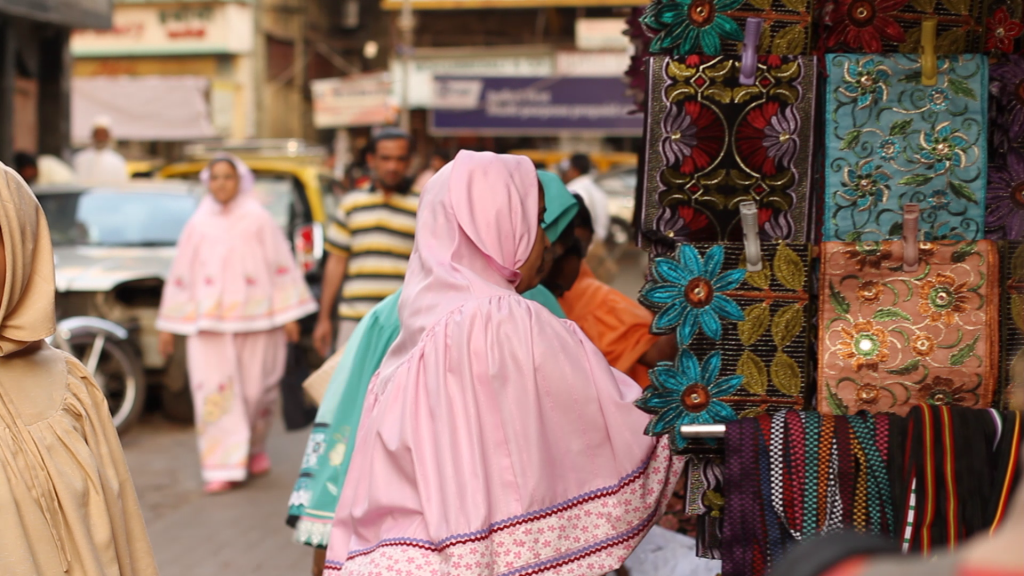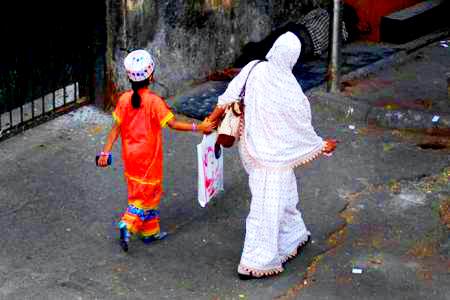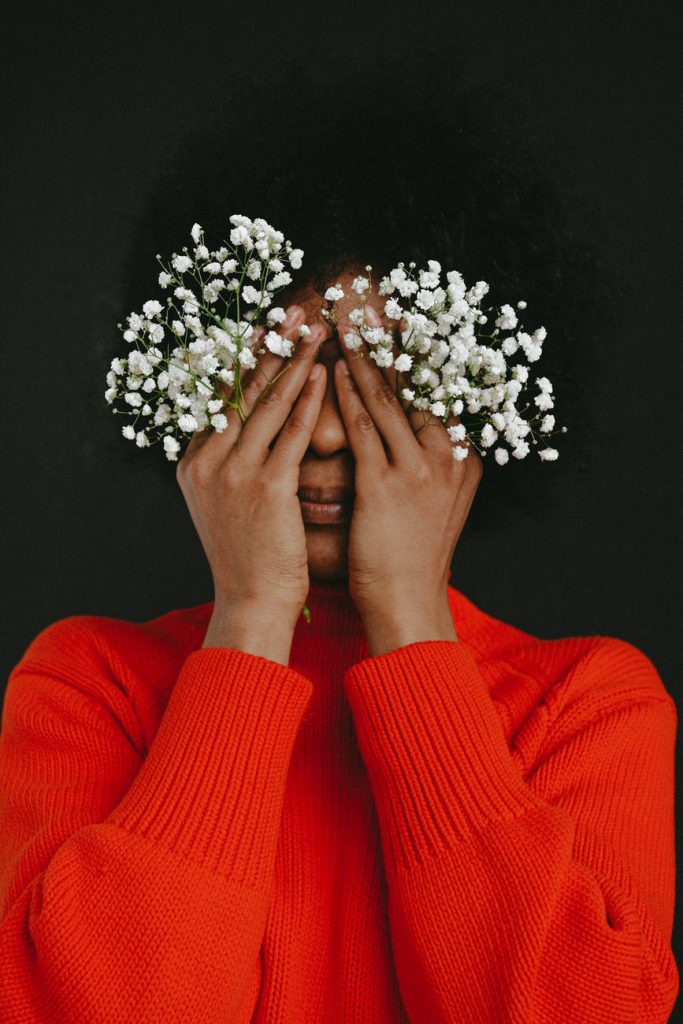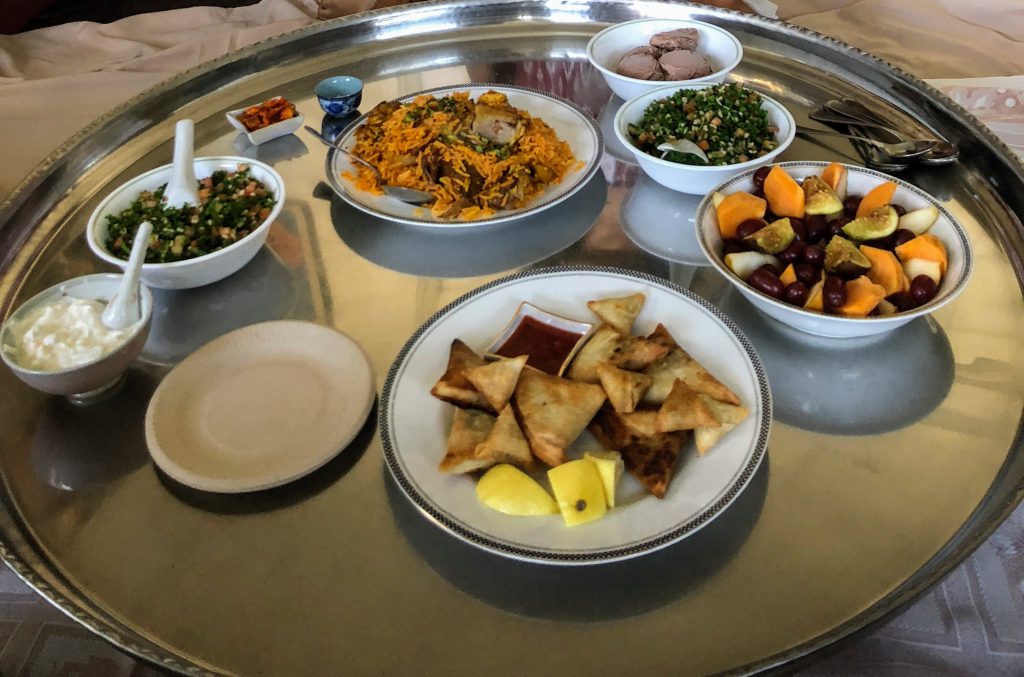Sleeping researchers and lack of data on female genital cutting in Pakistan

By Huda Syyed Two decades ago, I flipped through Reader’s Digest to distract my mind from schoolwork and the sweltering summer heat of Pakistan. My eyes glanced at the brief excerpt displayed mid-page with a glossy picture of a famous Somalian model, Waris Dirie. She exuded a sense of resilience, and I knew there was a meaningful story behind this woman. I was immersed in the daunting narrative of how she was blindfolded by her own mother to be cut. The pain was physically traumatizing, and she passed out. By the age of thirteen, Waris Dirie was coaxed by her father into the idea of an arranged marriage to an older man. Her dismay toward this proposal culminated into a desire to run away from home. She eventually found her way to London as a model. She still carried the realization that female genital cutting (FGC) extended beyond physical invasion, and resulted in health complications and deaths for many girls in Somalia. This encouraged her to become an activist, and she has dedicated herself to ending FGC. As I grew older and gravitated toward research and data collection, I found an article that mentioned FGC being practised in Pakistan. I was determined to gather contemporary data and historical understanding on it. Upon further readings, it became clear that FGC was a secretive practice in Pakistan in the Dawoodi Bohra community. A collective discernment of these realities pushed me to dig deeper and write a research paper that explored this practice and its socio-sexual effects. Apart from a few newspaper articles about FGC, there was not much information. It happens, but nobody talks about it. People from other communities are usually unaware that khatna is practiced in Pakistan. I was met with reactions of disbelief when I had discussions about it with non-members of the Dawoodi Bohra community. Sahiyo was one of the few reliable sources that recorded important data regarding FGC practices within the South Asian region (it also included Pakistan). Sahiyo focused on creating a culture of dialogue to uncover this practice; they also recorded numerical data, which could be helpful in tracing the frequency and historical context of FGC. Cutting is discreetly performed in residential spaces and not usually practised in conventional medical environments in Pakistan. Sahiyo surveys revealed this piece of significant information, which I later correlated with my own qualitative data. The interviews I conducted with a few participants in Karachi revealed that most of the young girls were cut at secluded spots inside a home, where some woman is well-versed with the physical practice of genital cutting. My main point of emphasis is that there is minimal research data on FGC in Pakistan, understandably so, because minority communities feel threatened or shamed for their cultural practices. Minorities in Pakistan have faced prejudice and threats in the past; hence, the need for cultural sensitivity while addressing FGC is imperative. Moreover, Pakistani society follows a patriarchal mindset, where female genitals or sex are uncomfortable topics to discuss publicly. This makes it challenging to have verbal discourse for the acquisition of qualitative data, because many women feel FGC should remain a secret. The lack of credible statistical data in Pakistan makes it difficult to track the frequency of FGC in contemporary culture. It is important to collect more data on FGC in Pakistan so it can be correlated with the socio-economic conditions, family set-up and religious leanings of young girls and women. Information of this sort could allow for a deeper understanding of bodily autonomy and factors that are more likely to foster a mutual respect for their bodies and its protection. There is a dire need for dialogue and engagement with the Dawoodi Bohra community from a culturally respectful distance. It is important for their community to feel unharmed and safe because this approach could lead to meaningful qualitative data that could help everyone understand the near permanence of FGC. Interviews, verbal discourse, and discussions are a gateway to accessing the historical, emotional, and psychological attachment of community members to this physically invasive practice. One of my interview participants expressed that FGC was a way of ensuring that a woman does not stray from her husband (possibly due to decreased sexual desire or libido response), and she did not see it as a harmful act. Keeping in mind such sentiments, it is vital to bridge the insider versus outsider dynamic by listening, recording, and preserving the anonymity of data respondents. If young girls and women in the Dawoodi Bohra community of Pakistan feel comfortable and secure discussing this topic with outsiders of the community, there will be more possibility of gathering useful data that could be utilized in creating support groups and spaces for those that have experienced physical or psychological strain or trauma due to cutting. Finding participants for qualitative data collection was a tedious task because very few women were willing to speak about this. Even within one community, there are those that deem FGC as a problematic practice; but there are also those that associate religious and cultural significance with it. Researchers must take a softer approach that refrains from shaming the community for ancestral practices. The objective should be to safely record community narratives and observe their historical reasoning for FGC, so that long-term solutions can be sought that diplomatically create safe options and spaces for young girls to celebrate the freedom of bodily autonomy.
Rejection of khatna must be a step in the liberation of Bohra women

By Zarina Patel Khatna, or female genital mutilation/cutting (FGM/C) within the Dawoodi Bohra community, is not a distinct or unique ritual. It has a context and it is important that Bohra women (and men) understand that context if they are to free themselves holistically, not only from the ritual itself, but from all that promotes it. Khatna is an imposition of a patriarchal system, a male-controlled system, that seeks to assign a gendered role or designated place for women and imposes rules and regulations to maintain these assigned roles. For women, that role is strictly within the family unit where her duty is first and foremost that of caring for her family, especially the husband or parents; giving birth, including ensuring the survival of humanity; nurturing the progeny; and upholding and promoting this culture and these customs which are largely defined by the patriarchs. No boy child has his destiny mapped out at birth within the Bohra community, but the idea of a girl child choosing and planning her destiny is considered as entirely secondary and trivial to her so-called God-given role. In this era of the internet and women’s liberation globally, it has seemingly become even more imperative for the patriarchs to keep their women (who, of course, they may consider as their property) in their place. Nothing works better than religious persuasion, but it so happens that nowhere in the Holy Quran is khatna mentioned, let alone made mandatory. So the patriarchs have concocted a variety of restrictions: women’s dress code is ordained for them; the baggy and unsightly rida is designed to make them feel ashamed of their bodies and to limit their movements; if women must work outside the home, it has to be in family circles or at most in a Bohra environment; if widowed, she must observe total seclusion for four months; associating or travelling with strangers is frowned upon, and so on. Khatna confers absolutely no benefit, medical or moral, to the girls who are cut. It can be traumatic with long-lasting effects both physical and psychological. It is one more such tradition, which at a very young age instills into the girl child that she is tainted and impure, and hence, it is normal for her to be violated and controlled. Is it surprising then that as adults, most Bohra women meekly accept the various restrictions placed on them. But women are the greatest defenders of the practice, we are told. True, very true – and some of those women are doctors and the like, educated, so to speak. Sahiyo has done, and is doing sterling work in exposing the harmful practice of khatna, and encouraging opposition to it. The rejection of khatna must be a step in the liberation of Bohra women.
Survivor: Female genital mutilation as a form of ritual abuse

By Nevaeh Novak (Trigger warning: Below is one woman’s account of her experience with female genital mutilation in the United States. This story is deeply disturbing and may be triggering for some. We thank her for being brave and sharing her story with us.) My experience of female genital mutilation (FGM) was not due to any religious belief, nor was it a cultural practice, as is most FGM. It was intended only to be cruel and torturous. For most of 16 years of my childhood I was ritually, sexually abused. On my 13th birthday I was taken to a barn where my “fixing” ceremony would be performed. I was secured to a table and feet stirrups with chains and straps, leaving me unable to move any part of my body. I saw the blade as he prepared to cut me. All of a sudden, I felt a burning pain. It was so excruciating I don’t have words to describe it, other than feeling like I was on fire. He either stitched me or cauterized me almost all the way closed. He let my legs drop then he strapped them together. I was still unable to move. I was left alone in that position, in and out of consciousness, for a couple days. The man that called himself my father did this to me and said, “Now no one will ever want you.” It wasn’t until almost 43 years later when a doctor explained to me exactly what happened; that my clitoris had been cut out, that my labia had been removed, and that I had been mostly stitched closed. Until then I only knew I had been hurt, and was ruined. Although I know I may not “fit” into the typical category women who have undergone FGM, I want what happened to me to be known because there are other women who have been hurt like me. But, ritual abuse is just not talked about. I want to be a voice for them, so that they know these survivors are not alone, and that there is help and hope. Nevaeh Novak What is ritual abuse? In a 1989 report, the Ritual Abuse Task Force of the Los Angeles County Commission for Women defined ritual abuse as “Ritual abuse usually involves repeated, prolonged sadistic abuse, especially of children, over an extended period of time (sometimes years). It is almost impossible to imagine the realities endured by victims of ritual abuse: multiple abusers with systematic motives coordinated with the sole purpose of perpetrating and maintaining a cycle of abuse. It is carried out in contexts where children are in groups, and within families or groups of families. The physical abuse is severe and can include beatings, electroshock, torture (even death), confinement and/or forced ingestion of drugs, blood, and feces. The sexual abuse is painful, humiliating, and sadomasochistic– intended as a means of gaining dominance over the victim. The psychological abuse is devastating and involves the use of ritual indoctrination. It includes mind control techniques which convey to the victim a profound terror of the cult members – most victims are in a state of terror, mind control and dissociation. These activities are kept secret from society at large, as they violate norms and laws. For more information about this issue: https://endritualabuse.org/ https://survivorship.org/ https://survivorship.org/frequently-ask-questions/#rabroad http://ra-info.org/
Protecting the girl child: The need for an anti-FGM law in India

By Anjali Shah “Girls are not property. They have the right to determine their destiny.” – Anthony Lake, Former Executive Director, UNICEF Religious dogmas have gained focus with women coming forward to challenge the subversion and repression that they have been subjected to for decades. This has brought into the limelight the practice of female genital mutilation (FGM), which thrives in the shadows of our society with little recognition. It is the fear of social exclusion that has prevented women from lifting the veil of secrecy, resulting in more girls being victimized. Some women of the Bohra Muslim community, where FGM is widely practiced, have justified FGM to be their religious and cultural right. However, a practice that demands such standards of purity from girls and women so as to remove a part of their body to curb their sexuality raises important questions pertaining to their right to live with dignity, equality, bodily integrity, and also their right to freedom from inhumane treatment. It may be argued that FGM can be practised under Article 25 of the Constitution of India that guarantees the right to religious freedom. However, this is not an unfettered right but is subject to the constitutional restraints of public order, health and morality. The content of morality is founded on the four precepts emerging from the preamble, i.e., justice, liberty, equality and fraternity, which assures dignity for human life. The test of constitutional morality is to bow to these norms. FGM is a practise that reduces a girl child to chattel. It makes her right to live with dignity conditional upon actions beyond her control. Moreover, it is a practise which can cause life-long impairment, including difficulties with urination, kidney damage, infertility and psychological problems. Thus, taking into account the consequences of FGM on the life and well-being of a girl, FGM may not justify itself to be a practice validated on the basis of any religious tenet. While some people categorise FGM as discrimination against women, it is often the women of the community who are the perpetrators of this practice. It thus boils down to FGM being a facet of religion governed by individual belief. Autonomy is the premise for religious freedom and only stands legitimised when applied to one’s own choice to undergo FGM. It cannot be used as a blanket protection to permit actions, which can be categorised as a crime causing grievous hurt under the criminal statutes of the country. The Supreme Court of India has observed that depriving freedom to choose on the basis of faith is impermissible. Given that FGM is largely carried out on girls, who have little or no knowledge of the atrocity they are being subjected to, this results in an implicit denial or deprivation of the freedom to make a choice to undergo cutting. This appears to be in direct violation of Article 21 of the Constitution of India. The focus on elimination of FGM by international organizations has driven several countries to enforce laws against FGM. Sadly, in India, neither the political leaders nor the judiciary is playing its part to ban FGM. The Public Interest Litigation filed in 2017 before the Supreme Court of India to enact an anti-FGM law is still pending after being referred to a larger bench. Additionally, the Minister for Women and Child Development in 2017, who once sought a ban on FGM, later released a statement to say that there is no data in existence of FGM in India. From the surveys conducted on FGM in India, it is apparent that girls and women are willing to raise their voices against FGM, but are prevented many times from doing so due to the fear of expulsion from the community. To ensure effective support, a specific anti-FGM legislation is of utmost significance. Such a law may play an important role to instill fear in the minds of the people who allow FGM or are indifferent towards it. It may serve as a tool for community members to combat societal pressure in regard to FGM. An anti-FGM law may reinforce confidence among the girls and women to report cases of FGM. It may also help to put in place a mechanism for mandatory reporting of cases and also adequate protection measures. A strong political will is the key to end the practice of FGM in India. It is only when the political leaders are sensitised about the consequences of FGM to women and girls, that there may be a positive change towards enacting an anti-FGM legislation. The next key element will be the capacity building of lawyers, judges, police personnel, and social workers, who will be the driving force to identify and prevent cases of FGM in the country by systematic enforcement of laws and policies. However, one needs to be mindful that while a law may serve as adeterrent, the perpetrators are almost always mothers, grandmothers and other family members. Thus, the fight towards abolition of FGM requires a sensitised and a holistic approach. This includes awareness programmes that stress on the issue of FGM, framing comprehensive policies and guidelines and also education about the consequences of FGM to overcome religious barriers and give importance to human life. Finally, societal change also requires a strong opposition from the men in their roles as fathers, community leaders and husbands who many times in the past have had a passive role in encouraging FGM. If they were to make the decision to abandon the practice, it would have widespread impact and help shift the mindset around FGM, thus aid to abolish the practice. There is a need for a change in the way people think and perceive others and their rights. This change will allow breaking the barriers of the age-old customs and traditions that allow subjugation of women, and will aid in protecting the girl child.
Part II–Medicalising khatna within the Bohra community: A Struggle of Tradition and Modernity

By Fatema Kakal (This is Part II in a series about female genital cutting within the Bohra community. Read Part I here.) While religion and religious leaders, along with culture and tradition can be drivers of female genital mutilation/cutting (FGM/C), law can play an additional critical role in disincentivizing khatna. The arrests in the U.S. and Australia due to the medicalisation of FGM/C, led to the reiteration of laws in countries that prohibited FGM/C. Laws in many countries around the world critique FGM/C as a human rights violation and child abuse. While some consider these laws to be racist, this leads to a feeling of marginalization and alienation due to the attack on traditional and cultural value systems. People became more conscious of the laws, and began reconsidering khatna, because of the risks involved. These laws helped initiate dialogue and discourse. The Bohras are a fairly progressive and modern community, where traditions are not separate from their modernity, but play a crucial role in consolidating their Bohra identity. Continuing khatna defies Western notions of modernity and embraces tradition. Instead of abandoning tradition, the Bohras are renegotiating the traditional practice and embrace modernity through medicalising khatna. Medicalisation is a tool to modernize and legitimize khatna, but also serves as a technique for social control. By supporting medicalisation, validated by modernity, and establishing khatna as a safe and religious practice, the clergy is reinventing and perpetuating khatna as a traditional practice, responding to external pressures that threatened to marginalize or alienate the Bohras. The clergy is thus reiterating and reinforcing Bohra identity as being one of modernity and tradition. Thus, khatna was no longer taboo, and a growing discourse has led to people taking increasingly different positions, and making more conscious decisions about continuing the practice. While mothers and women of the family used to be primary decision-makers of continuing khatna for the daughters of the family, fathers are increasingly involved in making the decision. It is no longer an extremely hidden practice, and parents do research before making the decision whether or not to cut their daughters. While some people follow mandates by religious leaders, others find it important to follow the law. People are conscious of the potential harm. For the devout, tradition must be followed, but by ensuring that harm is minimized. They choose to visit medical professions for khatna. For others, the risks of khatna outweigh its religious importance, and they have decided to abandon the practice. For others, consent is crucial, and believe khatna requires a girl’s consent. Since children are incapable of giving informed consent, people believe their daughters can choose to undergo the procedure as an adult, thereby making an informed decision. Thus, the religious clergy’s pastoral power plays an important role in influencing people’s decision to continue khatna. Medicalisation of FGM/C can help negotiate embracing tradition and modernity. However, law also plays an important role in helping end the practice. The growing discourse around the practice has led to people making informed, conscious decisions about following khatna. FGM/C is conceptualized as a health and human rights issue, and a children’s rights issue, which is universal. Thus, efforts against FGM/C should be focused on balancing universalization of children’s rights, human rights, and multiculturalism. Additionally, law plays a crucial role, because legislation can provide a universal stance against the practice, which can be used as a strong justification against it. Thus, community-wide change is required for individual families to abandon FGM/C, through education and activism from within the community, backed by law.
Reflections on the Voices alumni COVID-19 storytelling workshop

By Lara Kingstone Sahiyo held a StoryCenter-led COVID-19 storytelling session for Voices to End FMG/C alumni in May. The session was created to continue building community online and offer a space for women to share their stories during the pandemic. This workshop was designed to be an informal and relaxed space for those affected by female genital mutilation/cutting (FGM/C). By sharing lived experiences during the time of COVID-19, we sought to provide a space where these women could express emotion, thoughts and questions to a sisterhood of nonjudgmental ears. I was reminded, as I am in so many of the spaces created by women, how unbelievably resilient we are even now. Participants shared stories of their lives and I was blown away by the resilience, grit and sustained strength these women exhibited. It must be noted that this session was held days after the shameless murder of George Floyd, as protests against police brutality and hundreds of years of structural racism began to spark. It was incredible, speaking to women from different locations in the world, in different kinds of quarantines, some with families, some alone. We all are experiencing this chapter differently, but share common threads. Multiple participants spoke to the experience of being overwhelmed, angry and uncertain. The content spoken about during this session was confidential, but themes of frustration with the flawed systems in the United States continued to rise. Trauma has come up for a lot of people in the past few weeks, and months as well. We need to consistently allow ourselves time to reflect, and vent and process. I’m so grateful that part of Sahiyo’s work is creating these opportunities for healing.
How I learned female genital mutilation is happening in India

By Thirupurasundari Sevvel Country of Residence: India How do I start? How do I explain my first realization that there is a practice called female genital mutilation? It was a typical day. During my master’s program in France, I was working with a couple of my friends talking about so many different random things. The topic shifted to sexuality, human rights, and how the female body is viewed. I said as long as the female body is looked at as property or a commodity, the problem won’t be solved. Everyone wants to take ownership. Anyone can talk about bodies or sexuality. They can try to shut us inside the doors of the world. But what we as women do with our bodies is in our hands. “What if that essense of your body is taken from you?” a friend asked. “What if there is a sense of ugliness thrusted inside your mind about being sexual, and your sexual organ is scrapped and sewed up?” Silence filled the room. That’s how I learned about female genital mutilation. It was shocking to realize it is happening in India. I realized it has actually happened to someone I personally know, but someone who was defending the practice and saying, this is our culture and it’s not wrong. It was shocking that something I thought was happening in different parts of the world, has happened in the state I lived in. The friendship with her became strained because she felt I was talking against her religion, her faith, her family, and her community. For a second I thought–am I doing something wrong, am I intruding on someone’s faith? But her sister gave me another point of view of how it affected her emotionally, and I started meeting other women. That’s when I understood. It was social conditioning at play–being made to believe it is right and has to be done. There has been a lot of backlash, but even if one child could be spared or saved–the struggle would be worth it. My friend has a daughter now and has taken a stand that she won’t do it to her. Our friendship isn’t public anymore since her family feels I am the reason for her becoming a rebel. When will they understand that it is a human rights violation? In 2015, I started doing storytelling for adults and children on the topics of body positivity, FGM, the human body, understanding the body, and consent in the Tamil language. This is a very small way to create awareness and a basic step to change the social construct and mindset. The storytelling resonated with a lot of participants. We realized many wanted some time to talk to someone who could listen without judgment. When we have a discussion, we start with this quotation from the book Desert Flower by Waris Dirie, who is a Somali model, author, actress, and human rights activist in the fight against FGM, and let each participant share points on what they feel about it. I feel that God made my body perfect the way I was born. Then man robbed me, took away my power, and left me a cripple. My womanhood was stolen. If God had wanted those body parts missing, why did he create them? I just pray that one day no woman will have to experience this pain. It will become a thing of the past. People will say, “Did you hear, female genital mutilation has been outlawed in Somalia?” Then the next country, and the next, and so on, until the world is safe for all women. What a happy day that will be, and that’s what I’m working toward. In’shallah, if God is willing, it will happen. The impact of organizations, books, movies, videos, social media campaigns, study materials, and awareness posters is huge. The problem is that it’s a secretive ritual. As children, they may also think that it happens to every girl, or they may try to block the painful memory. Sahiyo, which means female friend, started to engage in dialogue with the community to find a collective solution toward ending FGM. The materials, information, and stories shared created a lot of change and awareness. A video that came out in 2018 of three firsthand accounts of khata in India created an impact on social media. The work of Masooma Ranalvi, an FGM survivor and activist from India, founder of WeSpeakOut, has also created a lot of ripples and change. In February 2019, a group of women from the community urged political parties in India to take steps to end FGM in their community and made the issue part of their poll manifestos. The collective works of these organizations and individual voices can put an end to this practice. There may not be many official records about FGM in India, but that does not mean it is not happening. It is a practice everyone should be against so that the girl children from the next generation do not undergo FGM. Speaking up is the only way forward.
Forced Clitoridectomies on Athletes

By Masuma Kothari (Several female athletes have been coerced to undergo partial clitoridectomies to participate in competitive sports. Read about female genital cutting (FGC) in sports here.) “Let me try to feel this, as if I was you. As a child I am embellished a rosy world of toyswhich could draw up to any passerby without a doubtwhat I am. I grow fast and in symphony my speed at running, too,adapts, I lean toward the world of athletics andfitness treats. I am changing, there are things happening to me,fine hair shows up where they never were,softer and fuller I feel,I start to menstruate. I definitely know what I am. My emotions attract me toward wonderful boys,They lure me into fantasies rolling up my eye. I definitely know what I am. All along I perform well, I score medalsafter medals, I get noticed with victory bells I get trained, I sit among the best runners,my mind shifts into a resilient achiever with thick endurance,representing every honour, I win all my fearsand I run like a cheetah after his dinner. I still definitely know what I am. What more evidence do you need,I may be giftedI may look testerone highbut how can you disregardall that I have? I am faced with a choice atthe time of my youththe time when I am bleedingto reach my dreams from rootSimply put, I have more couragethan being wisesoI sit under the knifeAnd now you tell me if that is nice?”
FGM/C in sports: Why some female athletes are being coerced into partial clitoridectomy

By Zahra Qaiyumi Imagine you are a professional female athlete who is told that you must agree to undergo a partial clitoridectomy in order to continue participating in your sport. This might sound like a far-fetched scenario, but due to an International Olympic Committee (IOC) policy, this is a reality for some hyperandrogenic athletes. Partial clitoridectomy falls under the classification of female genital mutilation/cutting (FMG/C), a practice that is recognized internationally as a violation of the rights of girls and women. Hyperandrogenism is characterized by high levels of testosterone in females. Individuals with hyperandrogenism often present with an enlarged clitoris, excess hair growth, acne, and decreased breast size, among other characteristics. High testosterone levels can be caused by many different conditions, including polycystic ovarian syndrome and androgen-secreting tumors. Testosterone levels have caused long-standing controversy in the realm of professional athletics. Many believe that higher than average testosterone provides some female athletes with an unfair competitive advantage. One olympian, South African middle-distance runner Caster Semenya, has been at the center of this debate in recent years. Semenya, 29, has attempted to appeal a new policy regulating the testosterone levels of female middle-distance runners by the International Association of Athletics Federations (IAAF) with little success thus far. The policy mandates that female athletes with differences in sex development (hyperandrogenism) must demonstrate a testosterone level of less than 5 nmol/L. This value must be maintained for a period of time before and during international competition in order to remain eligible. By enacting this policy, the IAAF is equating elevated androgen production with athletic advantage. The reality, however, is that there is no universally agreed upon scientific evidence that establishes a relationship between excess endogenous androgen production, or androgens that are produced naturally by the body, and athletic advantage in female athletes. The IAAF’s policy, although controversial, does not require or recommend any surgical alteration of the bodies of female athletes. However, similar regulations enacted in years past have lead to unintended consequences, such as coercion into FGM/C. In 2014, the International Olympic Committee (IOC) also established a policy to regulate hyperandrogenism in female athletes. The IOC’s policy mandates that national Olympic committees “actively investigate any perceived deviation in sex characteristics.” This investigation includes observation of the athlete’s genitals by doping officers while providing a urine sample. If an enlarged clitoris is observed, this counts against the athlete as a perceived deviation in sex characteristics. The IOC policies surrounding hyperandrogenism have caused unintended outcomes as countries attempt to comply with the rules. Most notably, medical procedures were performed on four young female athletes who were found to have hyperandrogenism. The procedures performed included a partial clitoridectomy and gonadectomy (in this case given the underlying condition, removal of the testes). The gonadectomy procedure resulted in the removal of a part of the body that produces androgens, thus technically serving the IOC’s goal to regulate hyperandrogenism. However, the partial clitoridectomy did not serve any medical purpose, and in no way related to actual or perceived athletic advantage. As stated earlier, partial clitoridectomy is a form of female genital mutilation/cutting (FGM/C). Performing the procedure on these four young women is antithetical to the decades-long mission to end FGM/C globally, which has been addressed by the World Health Organization. In terms of its impact on the individual, partial clitoridectomy has the potential to cause life-long biological and psychological consequences, including damage to sexual sensation and function for these athletes. Notably, the athletes were perfectly healthy before this procedure was performed and were in compliance with the IOC’s policies regarding cheating and doping. The IOC and IAAF policies regarding hyperandrogenism, though not meant to undermine medical recommendations, have put some female athletes in danger of undergoing unnecessary clitoridectomy. Many countries take the loosely-worded policy and create country-specific guidelines for compliance. This leads to the policing of young female athletes and placing pressure on them to undergo unnecessary procedures such as the partial clitoridectomy, which is a human rights violation.
Why are we doing this? A Thaal pe Charcha participant questions female genital cutting

By Anonymous Country of Residence: India Age: 32 I have been part of the Sahiyo Thaal Pe Charcha group meetings for a while and have found it an eye-opening concept. The more I’ve been involved, I’ve become more aware of female genital mutilation/cutting (FGM/C). In the first meeting, I came to know it as a social stigma that we women face due to misguided traditions. Knowing that more people support the cause made me feel a bit more confident to talk about it. Hearing about the issue of FGM/C made me more aware that people blindly do it because their familes do it. Some of them may do it out of fear and for the approval of society. During the recent February meeting we were shown a movie, A Girl from Mogadishu, based on the life of a Somalian FGM/C survivor and activist, Ifrah Ahmed. Her whole life she believed the tradition of FGM/C needed to be followed, as her ancestors did the same, so she never questioned it. But migration opened her eyes to the fact that what happened to her was not right. She did not deserve to suffer pain just because her society carried this practice for centuries blindly. I, myself, find a lot of people like my family and friends who are afraid to ask the questions: Why are we doing this? Is it necessary to hurt a girl in childhood? That psychological wound is so deep and may never be healed. No one can remember their childhood memories perfectly, but when something painful happens for some, it’s impossible to forget. I really want more people to share their experiences, come out of denial and support the cause to pledge to not let the next generation or anyone undergo the same pain they, themselves, might have undergone.
